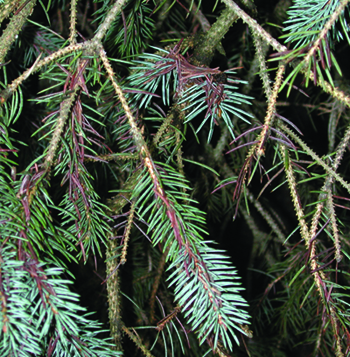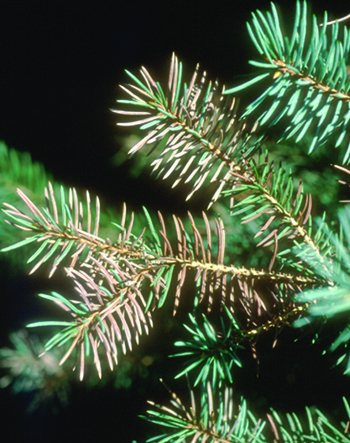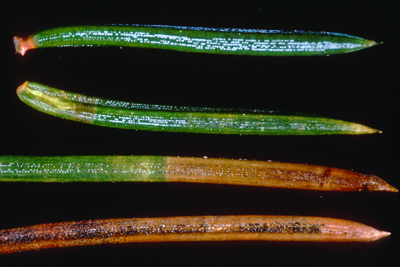Rhizosphaera needlecast
July 31, 2015
Cause
Rhizosphaera kalkhoffii (fungus)
Hosts
Colorado blue spruce is the primary host. Norway spruce is resistant. Other spruces and pines are infrequently attacked.
Symptoms/signs
With a hand lens, you can see rows of black specks on the needles, where the pycnidia have emerged through the stomates of the needles. These black fruiting bodies are diagnostic of infection by Rhizosphaera. Healthy needles have white stomates.
How it’s spread
The fungus lives inside the needle tissue, producing black fruiting structures (pycnidia) that emerge through the stomates (pores) of the needle. Spores are released throughout the growing season during wet weather. Most infection occurs on mature needles in May and June during wet weather.


Symptoms usually appear in the lower part of the tree first and progress upward. Older inner needles show symptoms first. Needles may first develop yellow or red speckles or blotches before turning brown or purple. Needles drop off the tree.
Management
Don’t prune trees when foliage is wet. Disinfest tools after pruning diseased branches. Improve air circulation through pruning and proper plant spacing. Preventative fungicide applications when needles are half grown and again when fully grown may help if the disease isn’t too severe.

Healthy stomates (top) appear white; pycnidia emerging through the stomates (lower needle) cause them to look black.
Print a PDF of this page: Rhizosphaera needlecast



 Print
Print Email
Email


